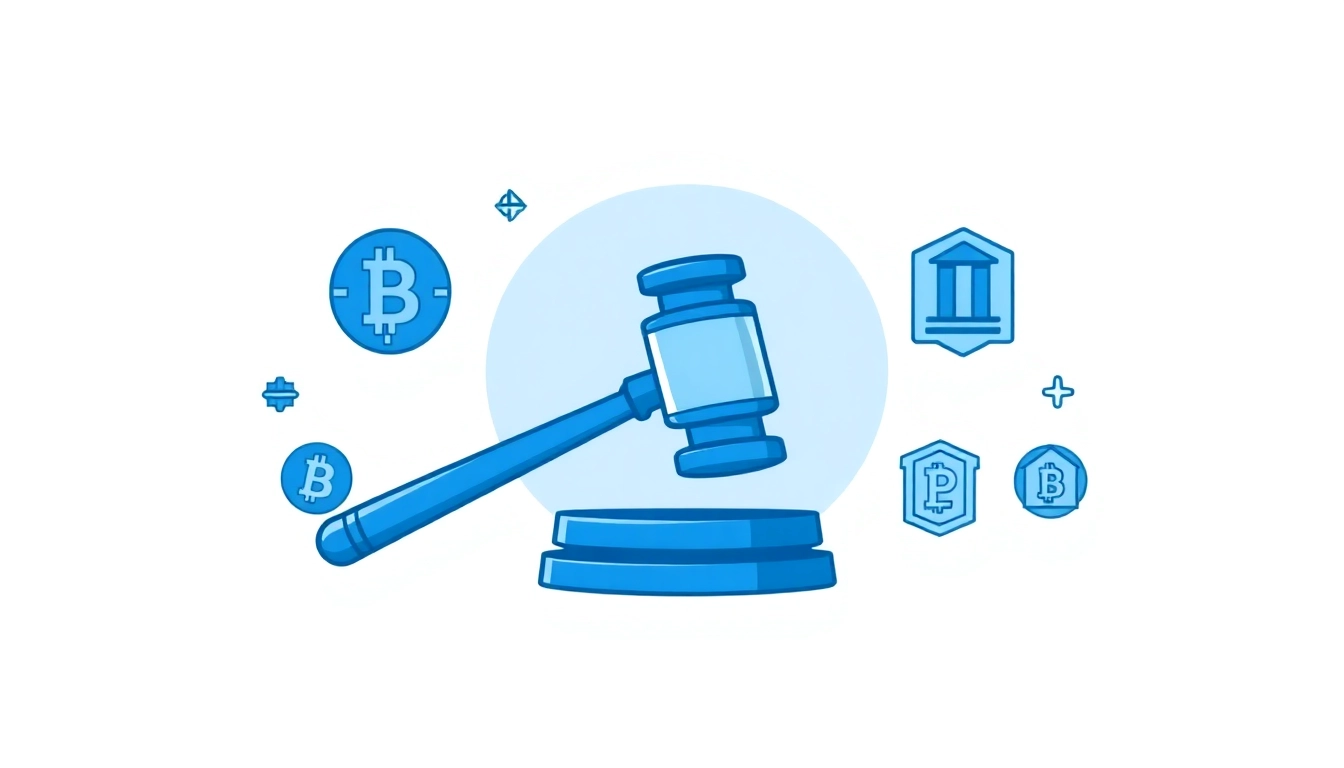In the rapidly evolving landscape of digital assets, understanding the nuances of crypto regulation is essential for investors, developers, and policymakers alike. As governments worldwide grapple with establishing effective frameworks to oversee cryptocurrencies, the regulatory environment continues to shift, influencing market dynamics, innovation, and institutional participation. This comprehensive guide delves into the fundamentals of crypto regulation, examines key players and recent developments, and offers practical guidance for navigating this complex and critical domain.
Understanding the Fundamentals of Crypto Regulation
What is Cryptocurrency Regulation and Why It Matters
Cryptocurrency regulation refers to the set of legal rules and guidelines implemented by governments and regulatory authorities to govern the issuance, trading, use, and custody of digital assets. These regulations aim to protect consumers and investors, prevent financial crimes such as money laundering and fraud, ensure financial stability, and foster innovation within a secure framework. Given the decentralized nature of cryptocurrencies and the speed at which the technology advances, establishing effective regulation is both challenging and crucial.
Good regulatory practices are vital for mainstream adoption, attracting institutional investors, and integrating digital assets into existing financial systems. Without clear regulations, market participants face uncertainty and increased risks of fraud, hacks, or legal repercussions—factors that can significantly hinder growth and stability in the sector.
Historical Evolution of Crypto Laws Worldwide
Since Bitcoin’s inception in 2009, nations have responded with a diverse array of legal approaches. Early on, many jurisdictions adopted a hands-off stance, viewing cryptocurrencies as a novel form of property or commodity. Over time, major economies introduced more structured regulations: Japan recognized Bitcoin as legal property; the United States developed a complex web of SEC, CFTC, and FinCEN guidelines; the European Union moved toward comprehensive frameworks like the Markets in Crypto-Assets Regulation (MiCA).
In China, a strict ban on crypto trading and mining was enforced, reflecting a regulatory approach based on risk control and capital outflow restrictions. Conversely, Switzerland fostered a crypto-friendly environment, positioning itself as a blockchain hub. These divergent strategies illustrate the global patchwork of crypto regulation, impacting how digital assets are issued, traded, and supervised across borders.
Core Principles Governing Digital Asset Regulations
- Protection of Consumers and Investors: Regulations aim to prevent scams, fraud, and market manipulation.
- Financial Stability: Authorities seek to mitigate systemic risks posed by decentralized finance and stablecoins.
- Anti-Money Laundering (AML) & Combating Fin Crime: Ensuring transparency and accountability in crypto transactions.
- Legal Clarity: Defining the legal status of cryptocurrencies, tokens, and exchanges to facilitate compliance.
- Innovation and Competitiveness: Balancing regulation to foster technological advancement without stifling growth.
Understanding these core principles provides a foundation for analyzing how different jurisdictions craft their regulatory policies and adapt to emerging challenges.
Key Players and Regulatory Bodies in Crypto Regulation
US Securities and Exchange Commission (SEC) Role
The SEC has become a central figure in the U.S. crypto regulatory landscape, primarily focusing on securities laws as they apply to digital assets. Its regulatory approach often involves classifying certain tokens as securities, thus subjecting them to federal securities law compliance. The SEC’s enforcement actions against unregistered initial coin offerings (ICOs), fraudulent schemes, and unlicensed exchanges underscore its proactive stance.
Recent initiatives, such as the formation of a dedicated Crypto Task Force, highlight efforts to clarify legal ambiguities. The SEC emphasizes investor protection, advocating for transparent disclosures and compliance frameworks, yet critics argue that its approach can hinder innovation. Notably, the SEC’s ongoing debate over the classification of tokens and the authority to regulate them remains a key aspect of U.S. policy.
European Union’s MiCA Framework Explained
The EU’s Markets in Crypto-Assets Regulation (MiCA), adopted in recent years, represents a unified effort to establish comprehensive rules across member states. MiCA regulates issuers of crypto-assets, trading platforms, wallet providers, and stablecoins, aiming to create a level playing field while safeguarding consumers and investors.
Key elements include licensing requirements, capital adequacy rules, operational standards, and transparency obligations. By harmonizing regulations, the EU seeks to position itself as a leader in responsible innovation and prevent regulatory arbitrage. MiCA also introduces measures to combat market abuse and support anti-money laundering efforts, reflecting the EU’s commitment to a balanced regulatory approach.
Global Regulatory Approaches and Variations
Worldwide, regulatory responses vary significantly based on economic priorities, cultural factors, and risk appetite. While some countries like Singapore and Switzerland foster innovation through clear and supportive policies, others like India and Nigeria implement restrictive measures or bans.
This heterogeneity can complicate cross-border compliance and catalyzes ongoing debates about the necessity of international standards. Initiatives such as the Financial Action Task Force (FATF) promote global cooperation on AML compliance, but enforceability remains a challenge. The emerging landscape indicates a trend toward more tailored yet increasingly coordinated approaches to crypto regulation.
Current Trends and Developments in Crypto Regulation
Recent Legislative Proposals and Bills
As the sector matures, legislators are actively proposing new bills to address gaps and emerging risks. Notable examples include the U.S. GENIUS Act, aiming to regulate digital assets more effectively, and the European Commission’s intent to extend MiCA provisions, covering broader token classes and DeFi activities.
Additionally, countries like Singapore are developing sandbox frameworks to facilitate experimentation with minimal regulatory barriers, fostering innovation while maintaining oversight. These proposals reflect an evolving understanding that flexible, proportional regulation is key to balancing growth with security.
Impact of Regulatory Changes on Market Participants
Regulatory shifts influence every facet of the crypto ecosystem — from retail investors and institutional players to developers and exchanges. Clear rules bolster confidence and attract institutional capital, exemplified by the recent $200 million Bitcoin infrastructure SPAC launch.
Conversely, abrupt crackdowns or bans can cause market disruptions, loss of assets, and diminished innovation. Compliance costs and regulatory uncertainty also impact project valuations and operational strategies, making staying ahead of legal developments crucial for market participants.
Case Studies: Regulatory Crackdowns and Compliance Strategies
South Korea’s crackdown on multi-million dollar hacking syndicates and its subsequent focus on enforcing AML measures demonstrate proactive regulatory enforcement. Firms like Bitplanet are adopting Bitcoin treasury strategies, aligning operational practices with emerging legal standards.
Education and transparency are vital compliance strategies—many companies are now prioritizing AML/KYC procedures, reporting obligations, and robust cybersecurity measures to navigate the increasingly regulated environment successfully.
Challenges and Opportunities in Implementing Crypto Regulations
Balancing Innovation with Security
One of the paramount challenges is designing regulations that do not inhibit technological innovation. Overly restrictive laws risk stifling startups and institutional experimentation, while lax oversight can foster illicit activities. Regulatory bodies are exploring phased approaches, sandbox models, and clarity in token classifications to strike this balance.
Successful examples, such as the EU’s MiCA framework, show that clear rules can foster innovation while enhancing security.
Addressing Privacy and Cross-Border Issues
Crypto’s borderless nature complicates enforcement, raising privacy concerns and jurisdictional conflicts. International cooperation, like FATF guidelines, aims to mitigate these challenges; however, differences in legal cultures and priorities impede comprehensive harmonization.
Emerging solutions include mutually recognized licenses and cross-border data sharing protocols, fostering compliance without infringing on privacy rights.
Future Outlook: More United or Divergent Policies?
While divergences persist, there is a clear trend toward convergence of standards—driven by market growth, institutional demand, and the need for safeguarding financial stability. Initiatives like the G20’s work on crypto regulation highlight efforts toward coordinated policies, though sovereignty concerns and technological disparities remain hurdles.
Ultimately, a more unified regulatory landscape may emerge, balancing local priorities with international consistency.
Practical Guides for Navigating Crypto Regulation
How Businesses Can Ensure Compliance
Businesses engaging in crypto operations should establish comprehensive compliance programs including AML/KYC procedures, transaction monitoring, and regular legal audits. Engaging legal counsel with expertise in crypto law, implementing robust cybersecurity measures, and maintaining transparent reporting practices are critical steps.
Participation in regulatory sandboxes and proactive engagement with authorities can facilitate smoother entry and operation within evolving legal frameworks.
Strategies for Investors and Traders
Investors should stay informed about jurisdictional regulations affecting their holdings, utilize reputable exchanges with compliance commitments, and incorporate risk management strategies. Diversification and careful assessment of tokens’ legal status can mitigate regulatory risks.
Using tools like regulatory alerts, news aggregators, and legal advisories enhances awareness of policy changes that may impact portfolio value.
Tools and Resources for Staying Up-to-Date
- Legal and regulatory blogs (e.g., Thomson Reuters, LawGeorgetown)
- Official publications from SEC, EMA, and other agencies
- Crypto compliance software platforms
- Participation in industry forums and webinars
Continuous education and strategic compliance implementation will be essential as the crypto regulatory environment matures.



